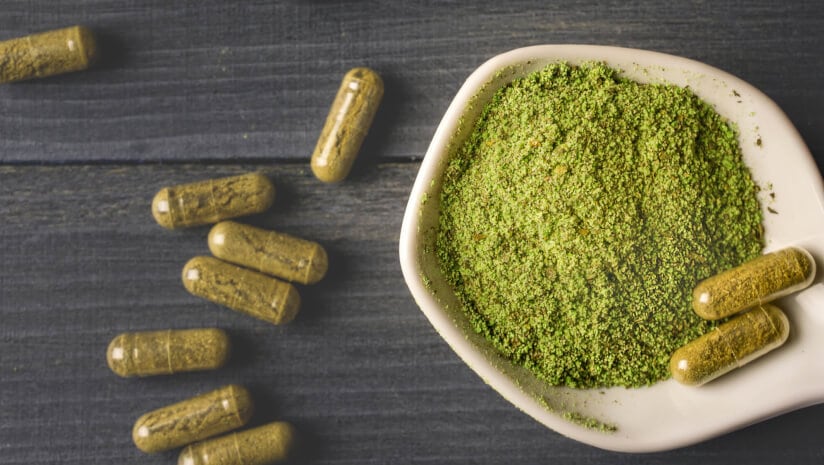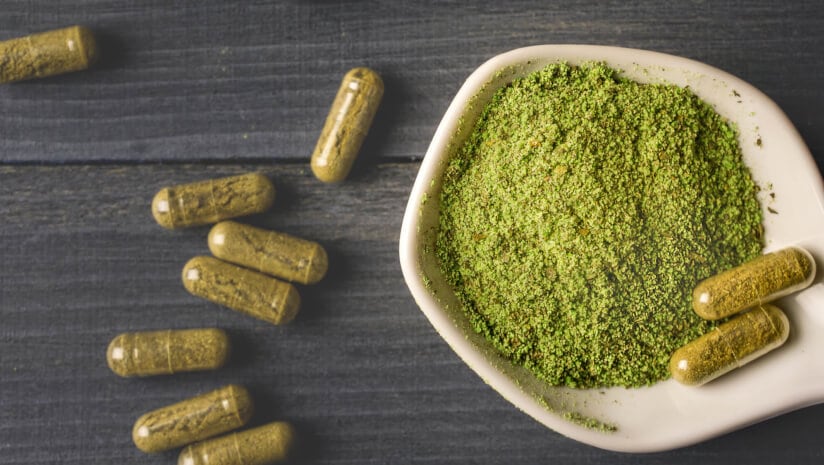AHPA wrote that it has a “longstanding trade requirement on the disclosure of added constituents, which requires in relevant part that finished products containing a botanical raw material to which a constituent has been added are labeled with a listing of all ingredients contained in or added to the material in order of predominance.”
In other words, it is often unclear what ingredients are found in synthetic ‘kratom’. According to AHPA, these products primarily consist of 7-hydroxymitragynine (7-OH) and often lack other alkaloids commonly found in plant-derived kratom products.
“Our guidance policy on kratom, specifically on the marketing of kratom, is intended to try to address a point of confusion that we’ve seen in the marketplace between products that are labeled as kratom as the botanical kratom versus products that may or may not contain a botanical but also look an awful lot like they contain completely unrelated chemicals,” said Robert Marriott, AHPA director or regulatory affairs.
AHPA said the non-binding guidance has several purposes, including encouraging the supplement industry trade associations to follow suit and take a stance on synthetic ‘kratom’.
“In some ways, this is similar to the cannabis situation where you have cannabis products, and then you have products that are labeled as cannabis, but they consist of substances that seem quite alien to the actual botanical in lot of ways,” Marriott said.
Hemp products evolved into CBD products to hemp-generated cannabinoid products that in some cases were as potent as substances states were regulating as legal marijuana products, said Jane Wilson, director of program development at AHPA.
“Kratom is not a one-to-one comparison to that industry but is similar in terms of the complexity of the problem when industry is way ahead of where regulations are, either at the federal or state levels.”
Food and Drug Administration
Kratom comes from the leaves of a tropical evergreen tree, Mitragyna speciosa, native to Southeast Asia and has been incorporated into herbal medicine for the last three centuries. It is often used as a stimulant, and higher doses can offer relief from intense pain. The U.S. Food and Drug Administration cautions the use of kratom as it can cause potential harm, including liver toxicity, seizure and substance use disorders, and the agency has said it is not appropriate for use as a supplement.
Although some states have banned kratom, several bills have been introduced in Congress to protect access to kratom.
“The FDA has taken positions opposing kratom as a general categorical, and AHPA doesn’t necessarily agree with that position,” Marriott said. “We think that kratom is a botanical, like any other, and I think that there needs to be additional work done to examine this. That sort of research is currently ongoing.”
The FDA also says synthetic ‘kratom’ can cause sedation, nausea/vomiting, constipation, physical dependence/withdrawal and respiratory depression that may lead to death.
“My understanding is that the 7-OH has a greater affinity for something that would be kind of an opioid receptor within the human body, so that you would get a much greater response to that than you would the from a typical profile of the alkaloids that you’d get from leaf kratom,” Director of Program Development for the American Herbal Products Association said.
She added that there may be an addictive response compared to the kratom leaf product.
Guiding legislation
Although AHPA’s new guidance is not specifically geared to states trying to regulate either kratom or 7-OH, the organization has been willing to work with legislators to craft legislation regarding both.
“AHPA’s usual position is to oppose state-by-state regulation of individual product categories—we don’t like the patchwork approach,” Marriott said. “But we’ve taken that approach in the hemp space and in the kratom space, because there’s an interest from the regulated industry to take this approach to see these regulations through. And because the federal government is just out of sync and out of resources to address the situation.”
Under these circumstances, there may be 50 different sets of regulations for how a product is labeled.
“State lobbying is occurring from the kratom trade associations regarding the state laws,” Marriott said. “I think that we’re just going to see a continued effort in that direction to both introduce these regulations in new states and also create standardizing amendments in the states where they already are.”
He said with states crafting legislation that it is not a fast process and “we could be here for a number of years.”


